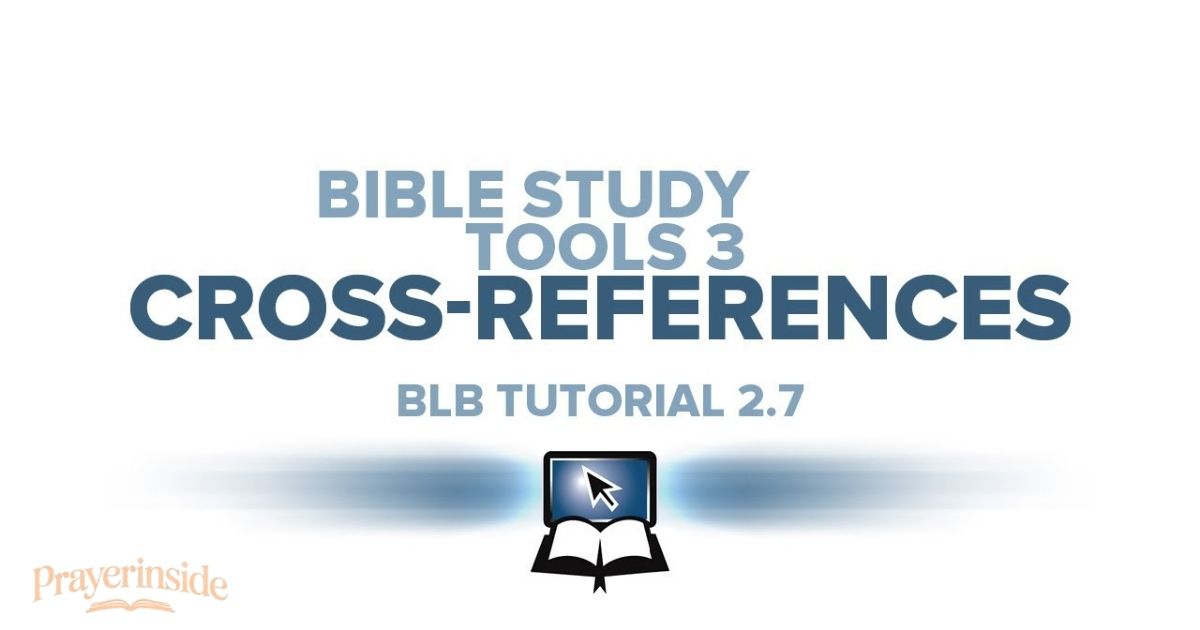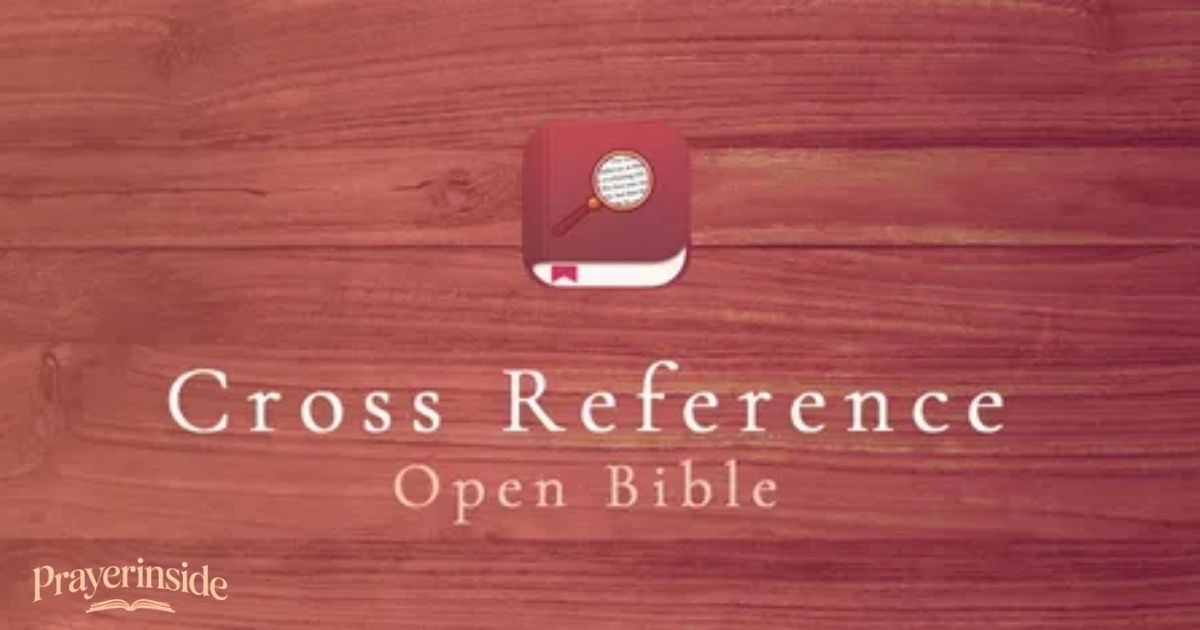A Bible cross reference is one of the most powerful tools for anyone who wants to study Scripture deeply. It connects verses, themes, and teachings across both the Old and New Testaments. By using cross references, you can uncover the full meaning of God’s Word and see how verses relate to one another. Whether you are a beginner or a seasoned Bible reader, understanding bible cross reference methods will enrich your prayer life, meditation, and spiritual growth.
The Bible is not just a collection of isolated verses. Each passage is part of a larger story that points to God’s plan, His promises, and His covenant with His people. Using a bible cross reference allows you to see those connections and helps you understand Scripture with greater clarity.
What is a Bible Cross Reference?
A Bible cross reference is a system that links one verse to another verse with a similar theme or message. For example, if you read about God’s provision in Philippians 4:19, a cross reference might point you to Matthew 6:31-33, which talks about trusting God for your needs.
Cross references show how the Bible interprets itself. They help you compare passages, understand repeated messages, and see promises fulfilled over time. For instance, the prophecy of the Messiah in Isaiah 53 can be cross-referenced with Jesus’ suffering in Matthew 27:32-56.
By using cross references, you can explore Scripture more thoroughly. A simple verse becomes a doorway to dozens of other passages that expand your understanding. The bible cross reference system is like a roadmap guiding you through God’s Word.
Historical Background of Cross References
The concept of cross-referencing Scripture has roots in early biblical scholarship. Jewish scribes and scholars, such as those in Babylonian exile, meticulously preserved connections between passages. Books like Ezra show the importance of studying and comparing Scripture carefully.
In the Middle Ages, scholars developed formal cross-reference systems to help students study the Bible. These systems highlighted repeated words, themes, and prophecies. By the 16th and 17th centuries, printed Bibles began including extensive cross-reference notes. Modern study Bibles, like the NIV Quest Study Bible, continue this tradition, allowing readers to follow thematic and doctrinal threads across the Bible.
The bible cross reference system is rooted in the belief that God’s Word is interconnected. Every verse points to another, creating a rich tapestry of meaning that reflects God’s divine plan.
Why Bible Cross References Matter

Understanding bible cross reference tools matters because it deepens your knowledge of God’s Word. Cross references reveal patterns in Scripture and help you see God’s promises in action. For example, reading 1 Chronicles 4:10 about Jabez in the Bible alongside Deuteronomy 8:18 shows how God blesses those who trust Him.
Cross references also enhance prayer. When you study connected verses, you can pray Scripture back to God with confidence. This aligns with James 4:2, which reminds us that asking in faith brings results.
Finally, cross references help avoid misinterpretation. By comparing Scripture with Scripture, you gain clarity and context. You learn to trust the Word and grow in spiritual discernment.
How to Use Bible Cross References Effectively
Using a bible cross reference begins with a verse that speaks to you. Look for related verses in a study Bible, concordance, or digital tool. For example, if you read Psalm 103:8 about God’s compassion, cross-reference it with Lamentations 3:22-23 to see God’s mercy over time.
Step one is patience. Start with one verse and follow its cross references. Take notes in a notebook or digital app. Step two is meditation. Reflect on how the passages connect and what God is teaching you. Step three is application. Pray the verses, like the prayer of Jabez in the Bible, and allow God to transform your heart.
Using cross references consistently turns reading into study. Tools like bible cross reference guides, concordances, and Bible software can make this process easier. But the key is engagement—don’t just read, reflect, and pray.
Examples of Bible Cross References in Action
One powerful example is prophecy fulfillment. Daniel 9 predicts the coming of Christ, which is cross-referenced in Matthew 6:9-13 where Jesus teaches prayer. By following these connections, you see God’s promises unfolding through history.
Another example is wisdom. Proverbs 3:5-6 about trusting the Lord can be cross-referenced with Romans 12:2, emphasizing the transformation of the mind. Cross references like these show patterns that guide daily living, prayer, and decision-making.
Even historical events in Israel and Judah are linked with spiritual lessons. Cross-referencing Babylonian exile events with later restoration in 1 Chronicles 16:11 reveals God’s faithfulness and covenant promises.
Benefits of Using Bible Cross References

A bible cross reference strengthens faith. Seeing God’s hand in multiple passages builds confidence in His promises. It also encourages obedience. For example, comparing Colossians 4:2 with 1 Chronicles 22:19 highlights the importance of devotion and persistent prayer.
Cross references also develop discernment. You learn to spot themes like blessing, provision, and protection from evil. Studying connected verses encourages heart transformation, character development, and spiritual growth.
Finally, it enhances teaching and discipleship. When you share lessons using cross-referenced verses, your message has depth and clarity. It allows you to guide others in understanding God’s Word fully.
Tips and Best Practices for Daily Use
- Keep a notebook of key cross-referenced verses.
- Use digital Bible apps for easy navigation.
- Focus on one theme at a time, like faith, prayer, or obedience.
- Pray each verse as you study it.
- Reflect on how the verses connect with your life, work, and relationships.
Consistent use of bible cross reference tools transforms reading into a dynamic, interactive spiritual practice.
Common Mistakes and How to Avoid Them
- Reading out of context: Always consider historical and cultural background.
- Ignoring original intent: Don’t force modern meaning onto ancient texts.
- Over-reliance on tools: Tools are helpful, but reflection and prayer are essential.
- Skipping connections: Don’t ignore subtle links between Old and New Testament passages.
Avoiding these mistakes ensures that bible cross reference study leads to true understanding and heart transformation.
Bible Cross Reference Study Plan

- Daily: Pick one verse, follow 2–3 cross references, and pray over them.
- Weekly: Focus on one theme, like God’s protection or blessing, and trace related verses.
- Monthly: Study a book of the Bible, using cross references to see patterns and connections.
By following a plan, you will see consistent growth in knowledge, faith, and application.
Conclusion
A Bible cross reference is more than a study tool—it’s a pathway to deeper faith and understanding. By following cross references, you can see God’s promises, provision, and protection throughout Scripture. From Daniel 9 to Matthew 6:9–13, from Psalm 103:8 to 1 Chronicles 22:19, cross-referenced verses reveal God’s hand in every story.
Using a bible cross reference transforms prayer, study, and daily life. It teaches spiritual growth, heart transformation, and faithful submission to God’s will. Start today, follow the threads, and allow God to guide your heart through His Word. Your Bible reading will never be the same.

